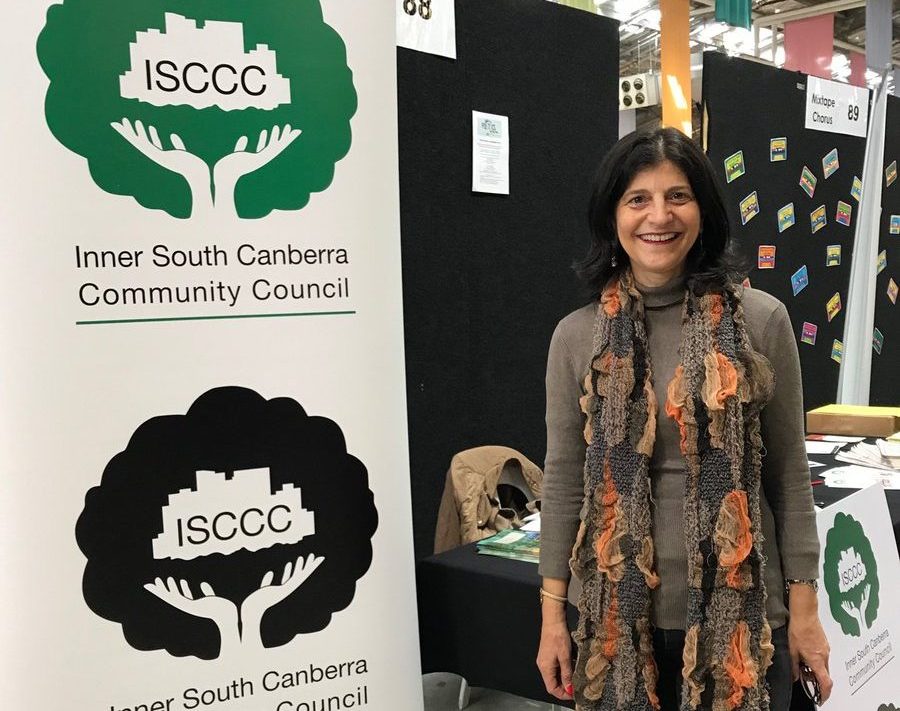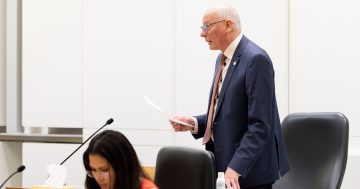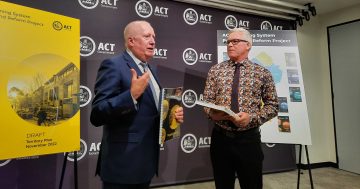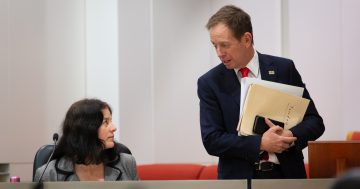
Greater Canberra convenor Howard Maclean denied that the group was politically affiliated and said members come from a range of political backgrounds. Photo: LinkedIn.
Pro-infill housing lobby Greater Canberra has been accused of being a Labor front after its convenor Howard Maclean was revealed to be a party member following a motion moved at last weekend’s ACT Labor Conference calling for medium-density housing in the RZ1 zone, which only allows standalone homes.
Inner South Canberra Community Council (ISCCC) chair Marea Fatseas said Mr Maclean, who has been Greater Canberra’s main spokesperson, should have been more upfront about his party affiliation when his group entered the debate about the planning reforms.
She said there had been a lack of transparency and the issue was that Mr Maclean was the delegate who pushed the upzoning motion at the conference.
That motion called for RZ1 to be changed to allow similar development to what is allowed in RZ2, while RZ2 rules would become more like RZ3, but it was amended to say the government would begin the process to change the zoning laws before the next election.
Ms Fatseas said the ISCCC had suspected that Mr Maclean was Labor-aligned but his conference role confirmed it.
She said another key player in Greater Canberra, Eben Leifer, had also been an advisor to Planning Minister Mick Gentleman.
But this had not been apparent when Greater Canberra appeared on the scene and became an official stakeholder in the planning reform process.
Mr Maclean denied the group was politically affiliated, saying members came from all political backgrounds.
“We have about 100 members on the books and only a tiny minority of those are members of the Labor Party,” he said.
“But we also have members of the Greens. We have Liberal Party members, and we have Progressive Party members and potentially other minor parties that I’m not aware of.”
Mr Maclean said he was just a rank-and-file party member, had never been a staffer and was not affiliated with a Labor faction.

ISCCC chair Marea Fatseas: “If we’re going to go to this new world of so-called gentle urbanism, then we’ve got to have some basic, really hard and fast rules about the amount of green space and solar access on the block.” Photo: Supplied.
Ms Fatseas feared upzoning without any enforceable rules for green space would change the face of Canberra, and accused Greater Canberra of taking a simplistic approach.
“There’s not enough discussion about the how, and if that isn’t done properly, then what we’re going to get is similar to what we’re getting in a lot of the new suburbs, where it’s mostly going to be building form on the block and not enough green space,” she said.
Ms Fatseas said Greater Canberra appeared to be modelled on the Greater Auckland organisation whose lobbying contributed to planning reforms that allowed up to three three-storey homes on ordinary suburban blocks with setbacks of only about 1.5 metres.
“How can you possibly get a tree to grow when you’ve only got a setback of 1.5 metres?” she said.
Ms Fatseas said the government was proposing to relegate the Living Infrastructure Plan measures, including the 30 per cent tree canopy and permeable surface targets, to the technical specifications and design guides, instead of inserting them in the Territory Plan.
“If we’re going to go to this new world of so-called gentle urbanism, then we’ve got to have some basic, really hard and fast rules about the amount of green space and solar access on the block … because if we go down the road of Auckland and have a 1.5-metre setback it’s not going to be the Canberra that we have now.”
Ms Fatseas said affordability was another issue that Greater Canberra paid lip service to, because allowing more homes to be built on a block did not guarantee they would be any cheaper.
“If they’re talking about affordable for the people who are the most vulnerable in our society, that’s not going to provide affordable housing because all the evidence is that it’s public housing, public and community housing that’s going to meet that need for affordable housing,” she said.
But Mr Maclean said Greater Canberra valued tree cover and green space just as much as everyone else.
He said that at present under the rules homes were being built on single blocks right to the boundaries but with upzoning the result would be a slightly smaller built area in many cases.
Greater Canberra supported the Living Infrastructure changes but was unsure at this point whether it made much difference whether they were in the Territory Plan or in the design guides.
“If it turns out that the government implements the Living Infrastructure changes into the new planning system and is not actually making sure that those requirements are adhered to, then we will definitely support changes to the system to make sure that they are,” he said.
Mr Maclean said more housing supply would drive down rents, as it had in Auckland, and much of the new stock would be townhouses, which were cheaper than standalone houses.
He also said zoning changes would also allow Housing ACT, one of the biggest landowners in the Territory, to provide more public housing without having to acquire more land.
The government is looking to release the updated Territory Plan, district strategies and technical specifications before the end of September.



















